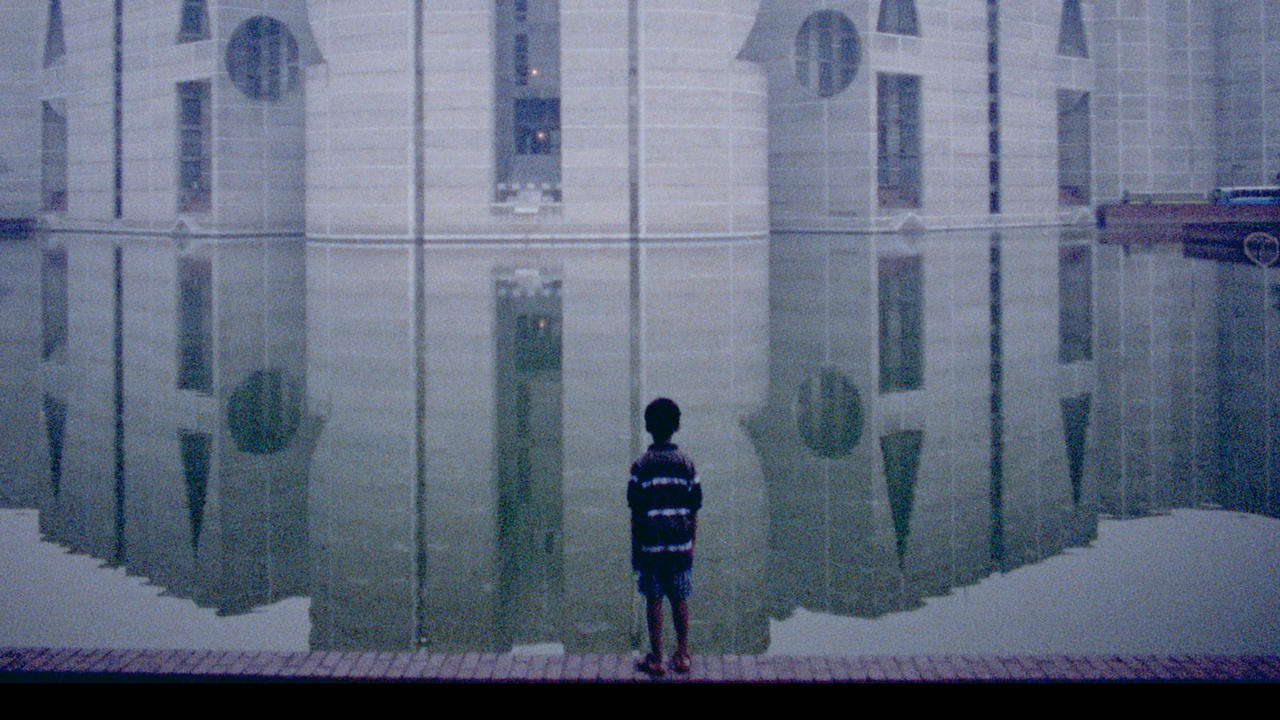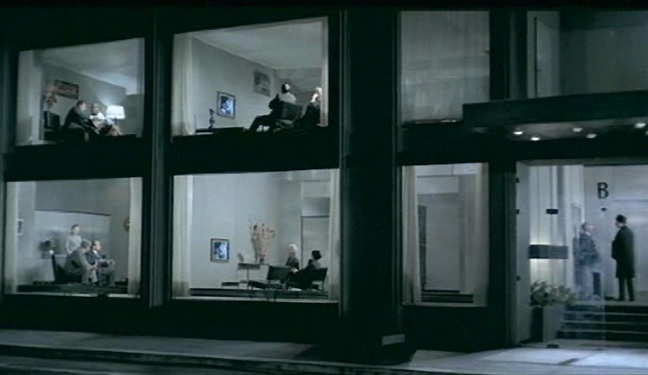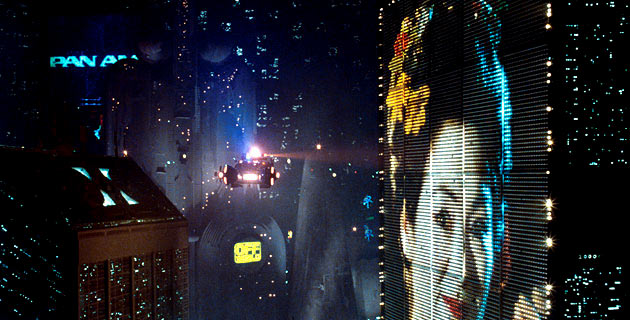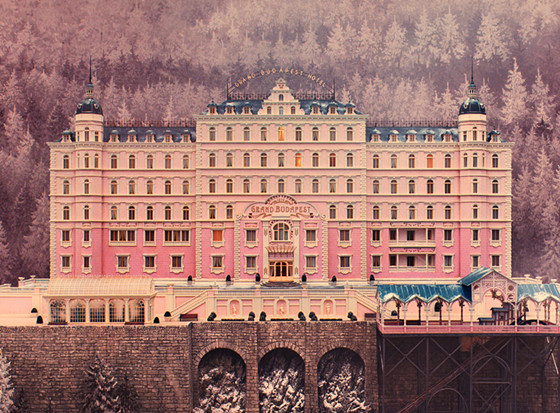6. My Architect (2003)

This movie, which seems like a regular documentary, is a clear attempt to penetrate into the essence of Luis Kahn through the eyes of his own son. The admiring son tries to put together the pieces of his father’s architectural persona through the words of his friends, colleagues and lovers. He starts a journey of visiting his father’s buildings in order to get a feeling of intimacy and a sense of understanding with his long absent parent.
The works of architecture, timeless buildings stand still in time, expressing intentions frozen in time. A building has the ability to speak for his creator through emotions hidden in space forever. The viewer has the unique opportunity to discover the controversial persona of Luis Kahn through his architectural work and personal life, through a cinematic way driven by his youngest child Nathaniel Kahn.
Who is really Luis Kahn? A nomad, a lover, a father, a spiritualist and above all an architect, Luis Kahn would always put his work above human relations. In a way he offered his emotions, ideas and ideals through architecture, to the entire humanity. Although he neglected his family and friends, he always had the big picture of architectural creation in his mind.
His connection to spirituality, nothingness, matter, materiality and light will always stay alive in his architectural creations present at all times for all humans. The film manages to confront the secret life of the architectural genius in a unique and personal way, through the innermost journey of his son. Anyone who loves architecture should try and follow his lead in the catacombs of Luis Kahn’s life and creations.
7. Play Time (1967)

In this film, Tati introduces a modernistic and futuristic universe full of kafkic references. The main hero of the film is a Flanner, similar to the uncle in his film “Mon Oncle”. A man with a coat, an umbrella and a pipe wandering inside the perfectly designed, minimal, modernistic spaces of an utopian future.
Despite the lack of a storyline and a specific plot, the viewer follows the adventures of a rather naïve man who’s lost in modernism. There is no escape from the contemporary futuristic modern city, crowded with people and vehicles and full of dead ends and chaotic hallways. Although the cars and the occupants of the space remain the same, the built cinematic environment is a futuristic fantasy of grey, black and white, depicting a minimalistic, colorless and soulless city of constant movement.
The viewer takes a tour around a future Paris, where the Eiffel Tower is the only remaining architectural monument and all history has vanished. There is an obvious exaggeration of all the architectural elements of modernism, in a world where form and function take the lead over spatial identity.
Tati offers a wide range of pictures and spaces that are aesthetically adequate enough to mesmerize the viewer and absorb him from the absence of any background stories or characters to engage with. These series of carefully thought images depict the occupied modernistic buildings of a futuristic Paris and funny little stories of the city dwellers and urban lifestyle.
The viewer has no other choice but to enjoy this tour through time and space together with a speechless and lost man, observing the people and their habits rushing through open concrete rooms, while feeling as lost as him in this peculiar future.
8. Blade Runner (1982)

In Los Angeles 2019, four electrically engineered replicants called Nexus6 have escaped the off-world, where they work and reside, in order to enter Earth and find their creator. The blade runner, a police operative, must find and terminate the rebellious replicants before he retires.
Riddley Scott introduces the viewer to a dystopian future of a metropolis falling in decay. The fog always covers the sun. The buildings stand tall, dark and soulless. The acid rain constantly pours down. Only the neon lights of the city billboards and the machines bring light in the film.
Influenced by Fritz Lang’s Metropolis, “Blade Runner” portrays a horrible future of the post-modern, post-industrial city. The Tyrell Corp resembles the Tower of Babel from Metropolis, dominating the dark city. It is clearly influenced by Mayan temples and modern skyscrapers with its steel and glass exterior.
Unlike other futuristic film cities that seem tidy, clean and well-defined through their automatization, the futuristic L.A. of “Blade Runner” portrays a dark, chaotic, decadence future. The upper classes have abandoned earth and only the cast-offs of society still inhabit earth. The huge buildings have been built and later abandoned to rust and decay.
Unlike the tall skyscrapers of the exteriors and the rapid evolution of the cars and machinery, the interiors seem dusty and old with conventional, standard furniture. The essence that is prevailed through the film is darkness, abandonment and the slow death of humanity and capitalism. Simultaneously the film is making a point about the relationship between humans and their cyborgs and the urban and social evolution of humanity.
9. Brazil (1985)

Terry Gilliam’s Brazil is a dystopian science fiction film made in 1985. Little did he know that most of his predictions would come true in the years to come. In this film, Sam Lawry, a low level government employee, often dreams of saving a damsel in distress. One day, he gets assigned a task created by a typographical error and slowly gets lost in the bureaucracy of the society while trying to save the girl of his dreams. In Gilliam’s universe, it is easy to get lost between reality and dreams.
Although the film is comical and sarcastic, it ends up being a futuristic nightmare with references of Kafka. Gilliam expects a failure of technology and bureaucracy, creating a comical post-modern universe where nothing really works sufficiently enough and all his heroes end up disappointed, lost in translation between themselves and the system.
On the spatial aspect, Gilliam sees the future world in a different way from other directors. He doesn’t predict an architectural evolution, but gets influenced from the contemporary. Only for the public building of the “Ministry of Information” he uses brutalism to reinforce a majestic and chaotic scary feeling. His disturbing world of dysfunctional machines and social-economical destruction is a completely chaotic environment with no specific architectural identity.
However, the set design always aims to create certain feelings to the viewer, like the sense of decay and complete deconstruction. It is really interesting how he uses his sets to create different feelings at different points of the film, confusing and engaging his audience. This weird future of undefined spatial notions gets trapped in the realm between dreams, nightmares and reality, while representing complete chaos in the best possible way.
10. The Grand Budapest Hotel (2014)

This movie tells the story of the mountainside glorious “Grand Budapest Hotel” in the fantastic European state, Republic of Zubrowka. It narrates the adventures of Gustave H. and Zero Moustafa, the lobby boy who becomes his most trusted friend.
With the engaging comical plot and the aesthetically exquisite frames of Wes Anderson, this film is as pleasing to the eye as to the soul. The viewer gets mesmerized from the pastel, vivid colors and the joyfulness of each and every frame, which captures space in a unique and innovative way.
What one can say about Wes Anderson is that he has an extremely unique way of constructing his frames. He uses the elements of symmetry and centers each and every one of his frames like an overachieving and careful architect. His frames are stylized to excessive details and nothing happens by chance. Additionally, he directs the movements of the camera inside the set in such an incredible and careful way, the viewer is confronted with a wide perspective of the spaces presented.
There is no other director that uses images and sets that resemble sections and floor plans to such an extent. Although, his movies don’t offer spatial interpretations or some innovative approach towards the future of architecture, the perception of space and the incredibly colorful aesthetics of his centered symmetrical frames are definitely worth mentioning.
Author Bio: Marilia Kaisar has recently graduated from the school of architecture. Between various creative projects, she spends her time dancing, devouring into books and films and writing about films, dance, eroticism and architecture.